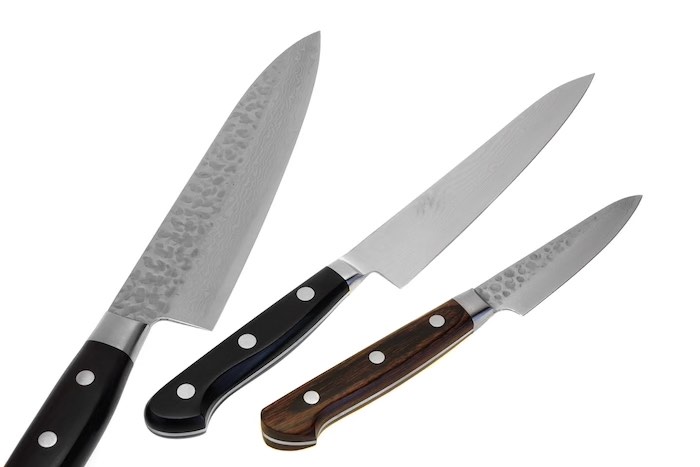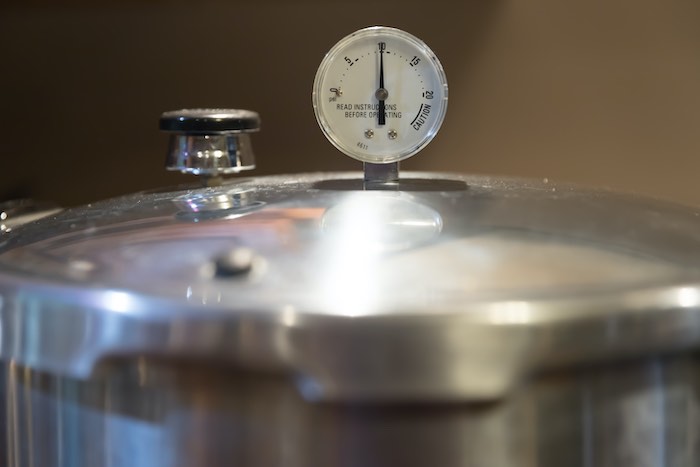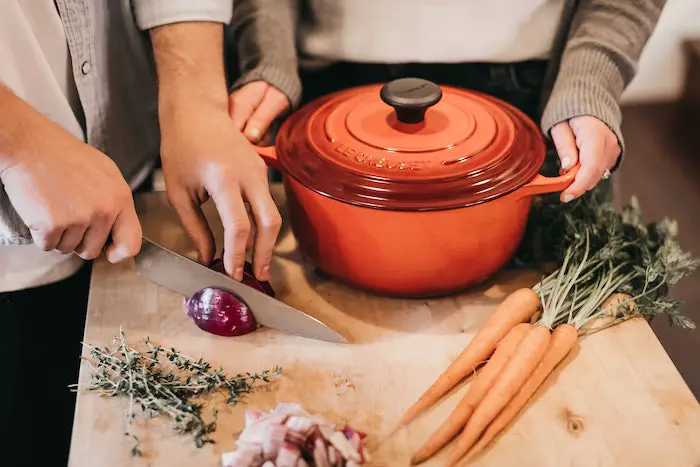As you start upgrading and increasing your kitchen knife collection, you will also start considering the finish of your kitchen knives as well. One of the most popular kitchen knife finishes is the “hammered” knife, but what exactly is a hammered knife, and is it better than the non-hammered finishes?
Simply put, a hammered knife is one that has a “hammered” finish, which means it has little speckled patterns in the metal of the knife as if having been hit and manually molded with a hammer. This finish theoretically serves a purpose in cutting through food with more ease in some cases, but there are also some serious drawbacks of this knife to be aware of before purchase.
To learn exactly what purposes a hammered finish serves as well as its drawbacks, keep reading. This article fully explains the differences between hammered and non-hammered knives so that you can select the best knife for your collection.
What are Hammered Knives?

A hammered knife (see Amazon) refers to a knife’s finish that has a hammer-struck appearance rather than the smooth chef knives with which we’re all most familiar. Knives with a hammered finish have speckles (or nooks and crannies) at the top of the knife’s blade that makes the knife more visually appealing. Not just that, but the hammered finish is theoretically supposed to aid with food release as well and aid in helping less stick to the blade.
Because the hammered finish is meant to aid with food release, you will almost exclusively find the hammered finish on cooking knives. That being said, many other knife types have also begun to include a version of a hammered finish due to the appealing aesthetic appearance.
Although there are some positives to hammered knives, there are some serious drawbacks to be aware of too. For starters, even though it is meant to help with food release, these knives sometimes cause a suction effect, thanks to all of those little dents and specks, which hampers the cutting experience instead.
Another drawback is that the hammered finish has crooks and nannies on the knife, which can lock in moisture and cause the knife to rust faster. As a result, it’s imperative to take exceptional care of a hammered knife so that it does not rust prematurely.
Non-Hammered Knife Finishes

There are many other knife finishes in addition to hammered knives, however. Some other finishes commonly found on kitchen knives include blacksmith, pear, polished, and Damascus. These finishes are especially popular in Japanese knives.
Of the non-hammered knife finishes, the polished finish is by far the most popular. If you go into any kitchen, the vast majority of the knives will have a non-hammered, polished appearance. This allows the knife to cut through food smoothly as well as be easily cleaned. Additionally, polished knives are often more affordable due to their availability.
Should I Get a Hammered Knife?
Whether or not you acquire a hammered knife is largely up to you. Even though hammered knives are theoretically meant to create a smoother cutting experience, they are almost exclusively purchased for aesthetic purposes.
If you want an eye-catching addition to your knife collection, definitely consider getting a hammered knife. This type of knife will surely be one of a kind with its unique patterning and lack of uniformity on the blade.
However, if you don’t care about aesthetics and simply want a good knife for cooking and other kitchen purposes, it’s often best to get a non-hammered knife. A non-hammered knife will not cause any suction or early rusting issues, and it will not require as much maintenance as the hammered option either.
Related Questions
What is the point of a hammered finish on a knife?
Theoretically, hammered knives are meant to aid in the release of cutting food. However, many individuals have noted experiencing the opposite with a hammered knife. As a result, the hammered finish on most knives is best for aesthetic purposes only.
How do I maintain a hammered knife?
Because hammered knives are more susceptible to rust, it’s important to maintain the knife properly. Above all else, do not wash the knife in the dishwasher.
Instead, handwash your hammered knife using mild soap and lukewarm water immediately after use. Completely clean and dry the knife before you store it away as well. Wherever it is stored, make sure it is kept away from any excess moisture.
Only try to use your hammered knife on occasion and primarily only use it only for aesthetic or show purposes. It is strongly recommended to opt for different finishes for use in everyday cooking purposes.
What is the best finish for kitchen knives?
The best finish for a kitchen knife is simply the polished knife. It is the most versatile finish, readily available, and is the easiest to maintain. If you only can pick out one finish, you should opt for the polished finish.
See Also:
How Many Tamales Fit In A 20 Quart Steamer?
Is SodaStream Worth It For Sparkling Water?
Are KitchenAid Knives Good? (Explained)
Ninja Foodi Air Fryer XL Review


